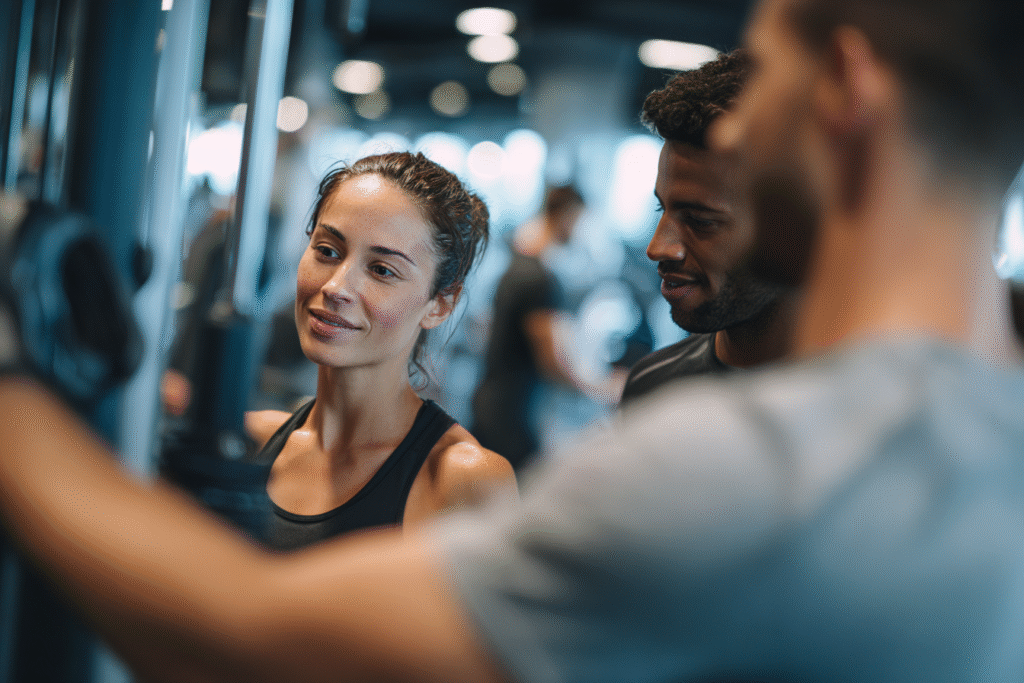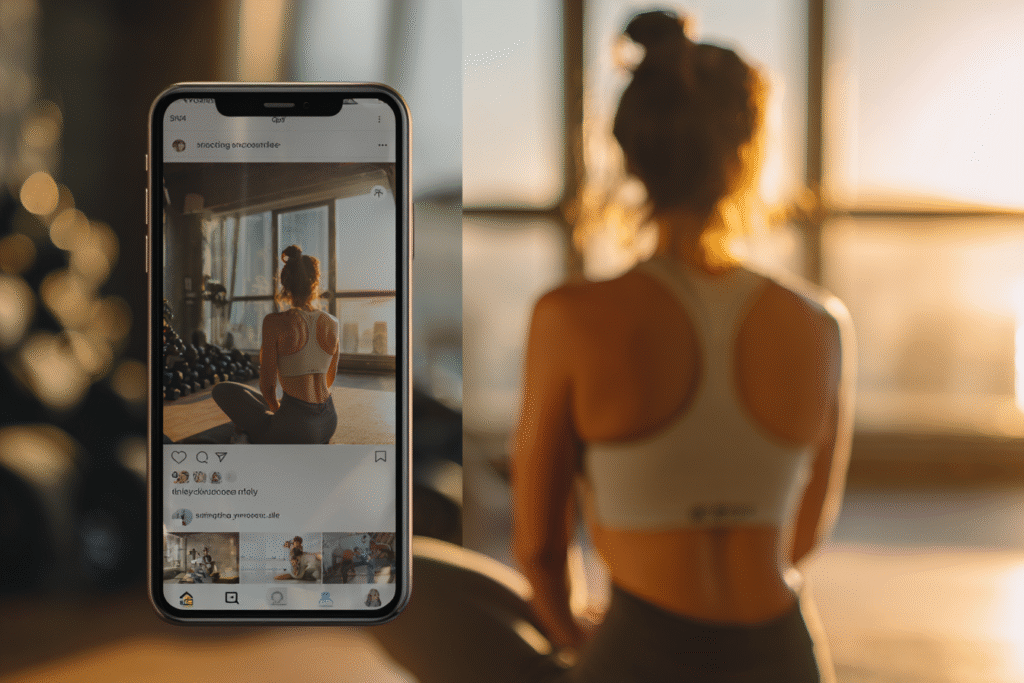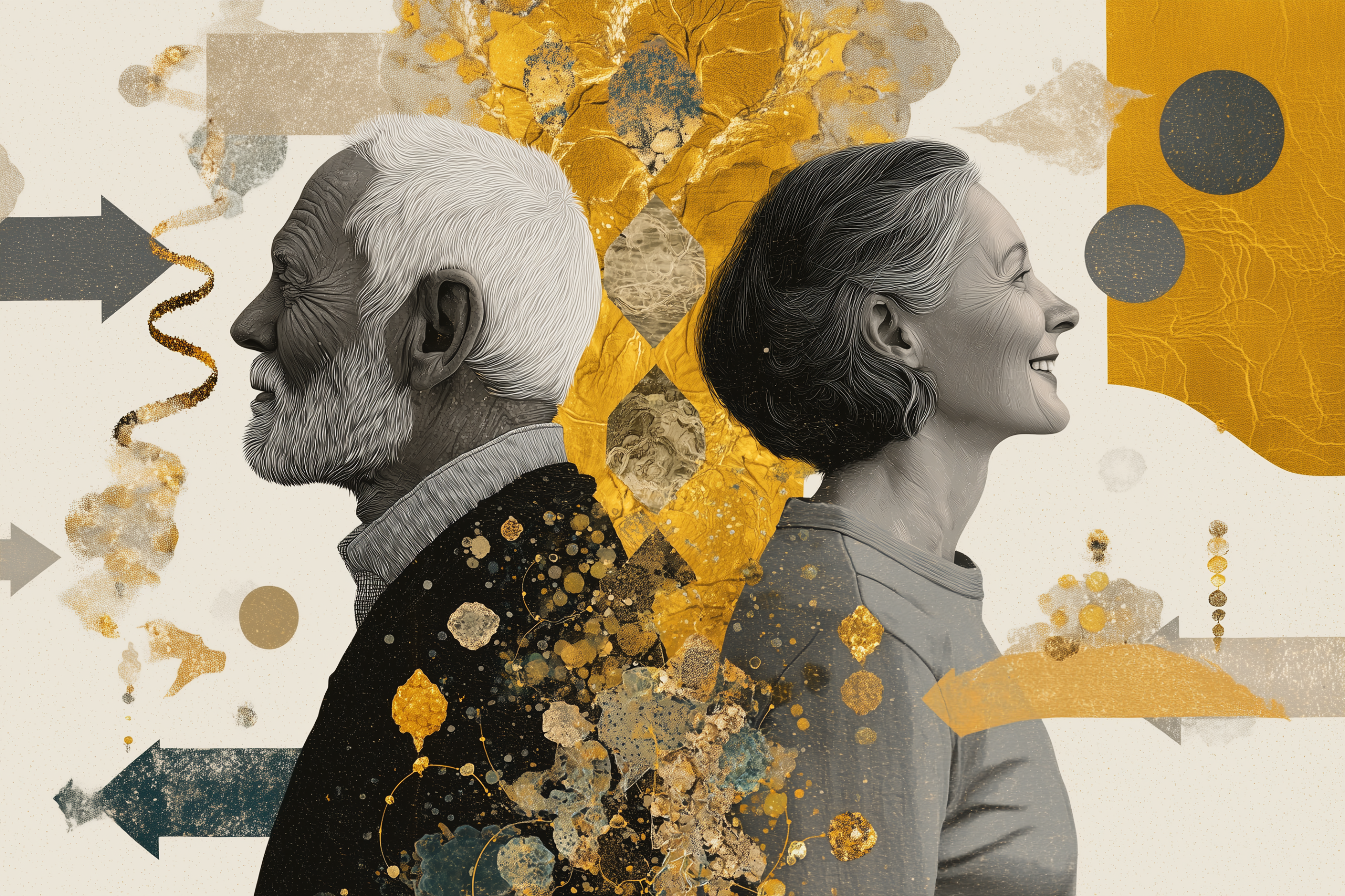The most profound health transformations rarely stay confined to one person.
Note: This article is for educational and informational purposes only. See full disclaimer at the end.
When Sophie started bringing her own lunch to work instead of ordering takeout, she wasn’t trying to influence anyone. She was simply following through on her commitment to better nutrition. But within three months, half her team had started meal prepping on Sundays. “I never said a word about what they should eat,” she reflects. “They just started asking what smelled so good.”
This is how real health transformation spreads—not through preaching or persuasion, but through the quiet power of living example.
Research from the National Center for Biotechnology Information reveals that [1] network members who observe and engage in health behaviors make these behaviors appear more prevalent and acceptable, creating what scientists call “descriptive norms” that naturally influence others.

The Science of Social Contagion
Health behaviors spread through social networks like ripples in water, with each transformed individual creating waves of influence that extend far beyond their immediate awareness. A comprehensive analysis in PLOS Medicine found that [3] social network interventions leveraging peer influence can effectively generate benefits for entire groups, not just individuals.
What makes this particularly powerful is that the person changing often experiences the greatest transformation. When individuals take on the role of promoting behavior change—even informally—they’re more likely to strengthen their own new habits than those who don’t engage in such roles [1]. Teaching, it turns out, deepens learning.
The mechanism is elegantly simple: when you explain your morning routine to a curious colleague, you reinforce your own commitment. When you share your meal prep strategies with a friend, you clarify your own system. When you model healthy boundaries with work stress, you strengthen your own resolve. Each act of sharing becomes an act of self-reinforcement.
The Identity Amplification Effect
Here’s what most people miss about health transformation: it’s not just about changing behaviors—it’s about changing who you are. And when identity shifts, its influence extends naturally into every interaction. Research on identity transformation shows that [12] when individuals integrate health behaviors into their sense of self, they create consistency between their actions and their fundamental values, making the influence on others authentic rather than forced.
Consider Marcus, a software engineer who transformed from someone who “tried to exercise” into someone who simply “is active.” The shift seems subtle, but its effects cascade through his entire social sphere. He doesn’t lecture his kids about screen time; he invites them on evening walks. He doesn’t criticize his partner’s stress eating; he prepares healthy snacks they both enjoy. He doesn’t argue with coworkers about taking breaks; he simply takes his, returning refreshed and productive.
This identity-based influence operates through what psychologists call “role model moments” [16]—specific situations where others observe not just what you do, but how you embody a different way of being. These moments arise when observers feel positive emotions about what they’re witnessing, have a sense of involvement, and can identify with the person they’re observing.

The Unexpected Power of Not Trying
Perhaps the most counterintuitive finding in social influence research is this: the less you try to change others, the more likely you are to influence them. Studies on adolescent peer networks show that [2] influence flows most naturally through authentic behavior modeling rather than direct persuasion attempts.
This presents a fascinating paradox. The moment you shift from living your transformation to preaching it, your influence diminishes. Why? Because people instinctively resist feeling controlled or judged. But when they observe someone genuinely thriving—not performing wellness but actually living it—curiosity naturally emerges.
“I stopped trying to convert anyone,” explains Maria, who reversed her type 2 diabetes through lifestyle changes. “I just focused on my own journey. But when people saw me turning down cake at office parties without drama, bringing my glucose monitor to restaurants without shame, they started asking questions. Real questions, not polite ones.”
The NIH’s research on peer influence confirms this pattern: [13] people are most influenced when they observe others making choices that align with their values, not when they’re told what those choices should be.
Creating Ripples Without Making Waves
So how do you share your transformation in ways that genuinely help others without triggering resistance? The research points to several key principles that distinguish effective health influence from well-intentioned preaching.
First, vulnerability trumps perfection. When you share your struggles alongside your successes, you create what researchers call “psychological safety”—an environment where others feel safe to explore change without fear of judgment [8]. The colleague who admits they still struggle with late-night snacking while sharing their morning routine success creates more influence than the one who presents flawless discipline.
Second, questions work better than answers. Instead of telling someone what worked for you, ask what they’re curious about. “What’s been on your mind about your health lately?” opens doors that “You should try intermittent fasting” immediately closes. Research on health literacy shows that [10] people learn best when they’re actively engaged in discovering solutions rather than passively receiving advice.
Third, make it about them, not you. When someone asks about your transformation, resist the autobiography impulse. Share enough to establish credibility, then pivot: “What matters is finding what works for you. What do you think might fit into your life?” This approach, validated by studies on peer health interventions [8], helps people maintain autonomy while exploring change.

The Family Laboratory
Nowhere is health influence more complex—or more important—than within families. Research on social determinants of health demonstrates that [11] family-level health literacy and behaviors significantly impact individual outcomes, particularly for children who absorb health patterns through observation rather than instruction.
The challenge with family influence is that it’s loaded with history, emotions, and established dynamics. The spouse who suddenly embraces morning workouts might trigger insecurity in their partner. The adult child who transforms their diet might inadvertently critique decades of family food traditions. The parent who quits drinking might destabilize social patterns built around alcohol.
Yet families also offer unique opportunities for positive influence. Shared meals become laboratories for gradual change—adding one new vegetable, adjusting portion sizes slightly, experimenting with herbs instead of salt. Family activities shift from food-centered to movement-inclusive—walking meetings replace coffee dates, active games substitute for movie nights.
The key is what researchers studying family health patterns call “parallel process”—changing yourself while creating space for others to change at their own pace [15]. You pack healthy lunches for yourself and anyone interested. You go for evening walks and welcome companions without requiring them. You model without mandating.
Digital Amplification and Its Discontents
Social media has fundamentally altered how health transformations spread, creating both opportunities and pitfalls. Your morning run posted on Instagram might inspire someone across the globe—or trigger comparison and shame in someone across the street. Understanding this digital dimension of health influence has become crucial for anyone navigating transformation in our connected age.
The research on online health communities reveals a paradox: [9] while digital platforms can accelerate the spread of healthy behaviors through network effects, they can also amplify unhealthy comparisons and unrealistic expectations. The carefully curated transformation photo might motivate some while discouraging others who don’t see their own struggles reflected.
The most effective digital health influence seems to follow the same principles as in-person influence: authenticity over performance, process over outcomes, community over competition. The fitness influencer who shares their rest days and setbacks alongside their achievements creates more sustainable influence than one who projects perpetual perfection.

The Workplace as Transformation Theater
Professional environments offer unique challenges and opportunities for health influence. You spend more waking hours with colleagues than family, yet workplace relationships carry different boundaries and expectations. How do you model healthy behaviors without seeming preachy or privileged?
Research on workplace health interventions shows that [4] peer influence in professional settings works best through informal networks rather than formal programs. The colleague who consistently takes lunch breaks normalizes self-care more effectively than any wellness seminar. The manager who respects boundaries models work-life balance more powerfully than any policy document.
The secret is making healthy choices visible without making them performative. Taking walking meetings when possible. Keeping water visible on your desk. Using calendar blocks for exercise without apology or explanation. These subtle signals create what organizational psychologists call “behavioral permission structures”—unspoken agreements that certain behaviors are acceptable and valued.
The Ethics of Influence
With influence comes responsibility. When your transformation inspires others to change, you become part of their journey whether you intended to or not. This raises important ethical considerations that rarely get discussed in wellness circles.
First, recognize that not everyone’s circumstances allow for the changes you’ve made. The single parent working two jobs might not have the bandwidth for meal prep. The person managing chronic illness might not have the energy for your workout routine. The individual in recovery might not appreciate your moderate drinking example. Influence without awareness of privilege can cause more harm than good.

Second, understand that your experience isn’t universal. What transformed your health might damage someone else’s. Your intermittent fasting success could trigger someone’s eating disorder. Your high-intensity training might injure someone with different biomechanics. Your supplement routine might interact dangerously with someone’s medications. This is why modeling works better than prescribing—it allows others to observe and adapt rather than replicate.
Third, maintain boundaries around your expertise. Unless you’re a qualified health professional, your role is sharing experience, not providing guidance. The line between “this worked for me” and “this will work for you” might seem thin, but it’s crucial. Research on peer health interventions emphasizes [8] that effective peer support acknowledges limitations and encourages professional consultation for medical decisions.
The Long Game of Transformation
Real influence doesn’t happen overnight. It unfolds through countless small moments—the lunch you pack, the walk you take, the boundary you maintain, the struggle you share. Each authentic expression of your transformed identity creates possibility for others, even when you don’t see it.
Research on behavior change networks reveals that [6] influence often flows in unexpected directions and timeframes. The coworker who seems uninterested might start walking six months after you do. The family member who resists might quietly adopt your sleep routine. The friend who argues might eventually ask for your grocery list.
This is why consistency matters more than intensity. Living your transformation day after day, season after season, creates what researchers call “observational learning opportunities”—chances for others to see that change is possible, sustainable, and worthwhile [7].
Beyond Individual Change
The ultimate power of sharing your transformation lies not in changing individuals but in shifting cultures. When enough people in a network adopt healthy behaviors, the entire social environment transforms. What was once unusual becomes normal. What was once difficult becomes supported. What was once isolated becomes communal.

Studies on community health interventions demonstrate that [14] when health literacy and behaviors reach a critical mass within a population, they create self-reinforcing cycles of positive change. The workplace that normalizes walking meetings makes movement easier for everyone. The family that defaults to whole foods makes nutrition simpler for all members. The friend group that prioritizes sleep makes rest socially acceptable.
This is how personal transformation becomes social revolution—not through grand gestures or evangelical fervor, but through the patient accumulation of lived examples. Each person who successfully transforms creates possibility for others. Each possibility realized creates momentum for more change. Each change normalized makes the next change easier.
Your transformation matters not just for you, but for everyone who observes it, questions it, resists it, and eventually considers it. You don’t need to be perfect. You don’t need to have all the answers. You just need to live your truth consistently enough that others can see it’s possible.
The question isn’t whether your transformation will influence others—it will, inevitably, in ways you may never fully know. The question is whether you’ll share it with the wisdom, humility, and patience that allows others to find their own path while drawing inspiration from yours.
Because in the end, the greatest gift of your transformation isn’t the specific practices you’ve adopted or the outcomes you’ve achieved. It’s the living proof you provide that change is possible, that health can be reclaimed, that identity can evolve. Every day you live your transformation, you give others permission to begin their own.
See you in the next insight.
Comprehensive Medical Disclaimer: The insights, frameworks, and recommendations shared in this article are for educational and informational purposes only. They represent a synthesis of research, technology applications, and personal optimization strategies, not medical advice. Individual health needs vary significantly, and what works for one person may not be appropriate for another. Always consult with qualified healthcare professionals before making any significant changes to your lifestyle, nutrition, exercise routine, supplement regimen, or medical treatments. This content does not replace professional medical diagnosis, treatment, or care. If you have specific health concerns or conditions, seek guidance from licensed healthcare practitioners familiar with your individual circumstances.
References
The references below are organized by study type. Peer-reviewed research provides the primary evidence base, while systematic reviews synthesize findings.
Peer-Reviewed / Academic Sources
- [1] National Center for Biotechnology Information. (2015). Social Network Assessments and Interventions for Health Behavior Change: A Critical Review. PMC. https://pmc.ncbi.nlm.nih.gov/articles/PMC4786366/
- [2] Gommans, R., et al. (2019). Peer social network processes and adolescent health behaviors: A systematic review. ScienceDirect. https://www.sciencedirect.com/science/article/abs/pii/S0091743519303809
- [3] Hunter, R.F., et al. (2019). Social network interventions for health behaviours and outcomes: A systematic review and meta-analysis. PLOS Medicine. https://journals.plos.org/plosmedicine/article?id=10.1371/journal.pmed.1002890
- [4] Hunter, R.F., et al. (2019). Social network interventions for health behaviours and outcomes: A systematic review and meta-analysis. PMC. https://www.ncbi.nlm.nih.gov/pmc/articles/PMC6719831/
- [5] Smit, C.R., et al. (2018). Youth’s social network structures and peer influences: study protocol MyMovez project – Phase I. BMC Public Health. https://bmcmededuc.biomedcentral.com/articles/10.1186/s12889-018-5353-5
- [6] Christakis, N.A., & Fowler, J.H. (2008). Estimating Peer Effects on Health in Social Networks: A Response to Cohen-Cole and Fletcher. PMC. https://pmc.ncbi.nlm.nih.gov/articles/PMC2597062/
- [7] Laursen, B., & Veenstra, R. (2021). Toward understanding the functions of peer influence: A summary and synthesis of recent empirical research. PMC. https://pmc.ncbi.nlm.nih.gov/articles/PMC8630732/
- [8] Dennis, C.L. (2013). Peer Interventions to Promote Health: Conceptual Considerations. PMC. https://pmc.ncbi.nlm.nih.gov/articles/PMC3607369/
- [9] Shelton, R.C., et al. (2021). Use of social network analysis in the development, dissemination, implementation, and sustainability of health behavior interventions for adults: A systematic review. PMC. https://pmc.ncbi.nlm.nih.gov/articles/PMC7857673/
- [10] Coleman, C.A., et al. (2022). Improving Health Literacy Knowledge, Behaviors, and Confidence with Interactive Training. PMC. https://pmc.ncbi.nlm.nih.gov/articles/PMC9126053/
- [11] Coughlin, S.S., et al. (2020). Health Literacy, Social Determinants of Health, and Disease Prevention and Control. PMC. https://pmc.ncbi.nlm.nih.gov/articles/PMC7889072/
- [12] Kwasnicka, D., et al. (2018). Harnessing Centered Identity Transformation to Reduce Executive Function Burden for Maintenance of Health Behavior Change: The Maintain IT Model. PMC. https://pmc.ncbi.nlm.nih.gov/articles/PMC6124500/
Government / Institutional Sources
- [13] National Institutes of Health. (2021). The Power of Peers. NIH News in Health. https://newsinhealth.nih.gov/2021/09/power-peers
- [14] World Health Organization. (2016). Health Literacy. Ninth Global Conference on Health Promotion, Shanghai. https://www.who.int/teams/health-promotion/enhanced-wellbeing/ninth-global-conference/health-literacy
Industry / Technology Sources
- [15] Caduceus International Publishing. (2025). The Ripple Effect: How Personal Health Education Benefits the Whole Community. https://www.cipcourses.com/blog/the-ripple-effect-how-personal-health-education-benefits-the-whole-community/
- [16] Van Schie, N., et al. (2024). ‘Role Model Moments’ and ‘Troll Model Moments’ in Surgical Residency: How Do They Influence Professional Identity Formation? Perspectives on Medical Education. https://pmejournal.org/articles/10.5334/pme.1262


